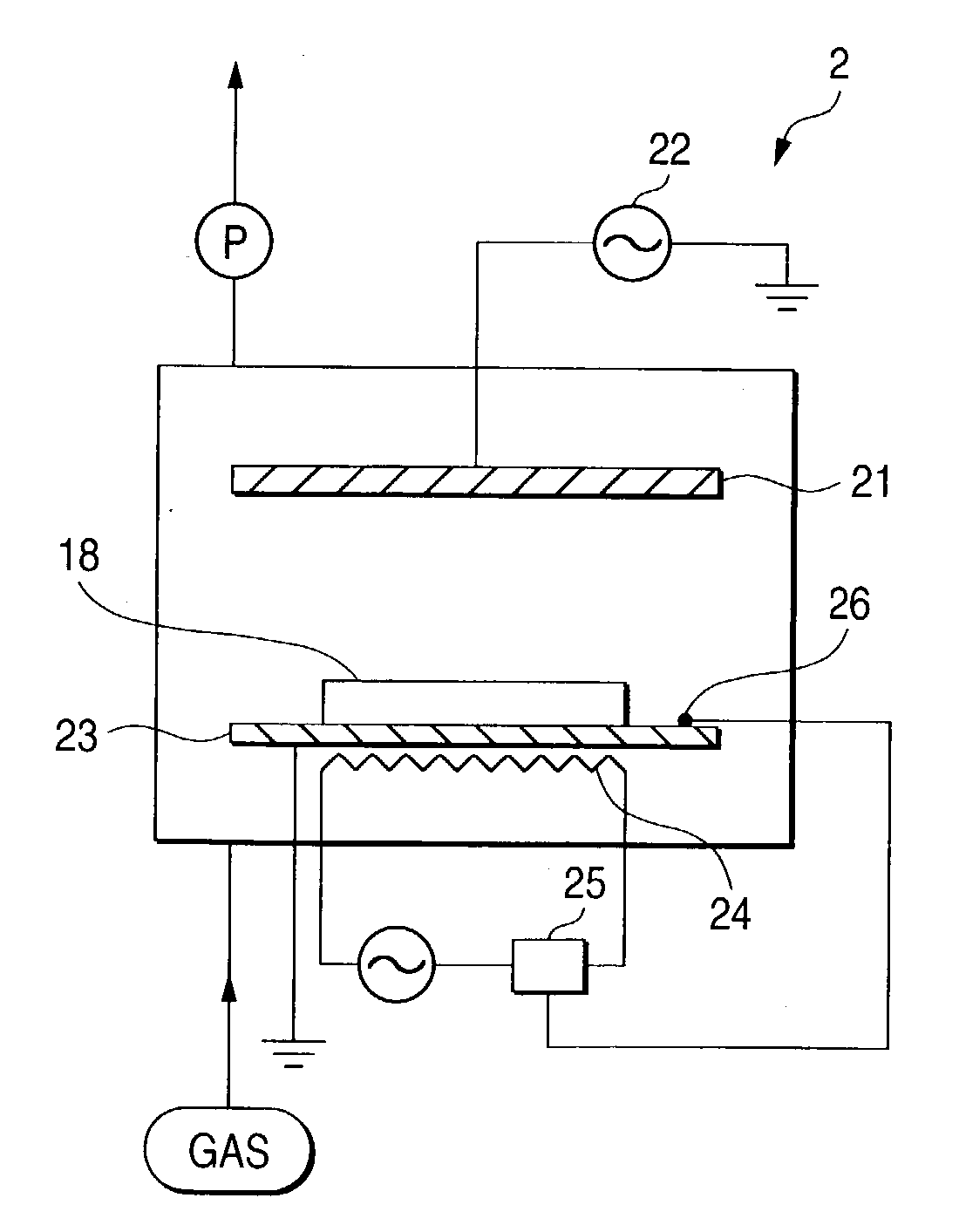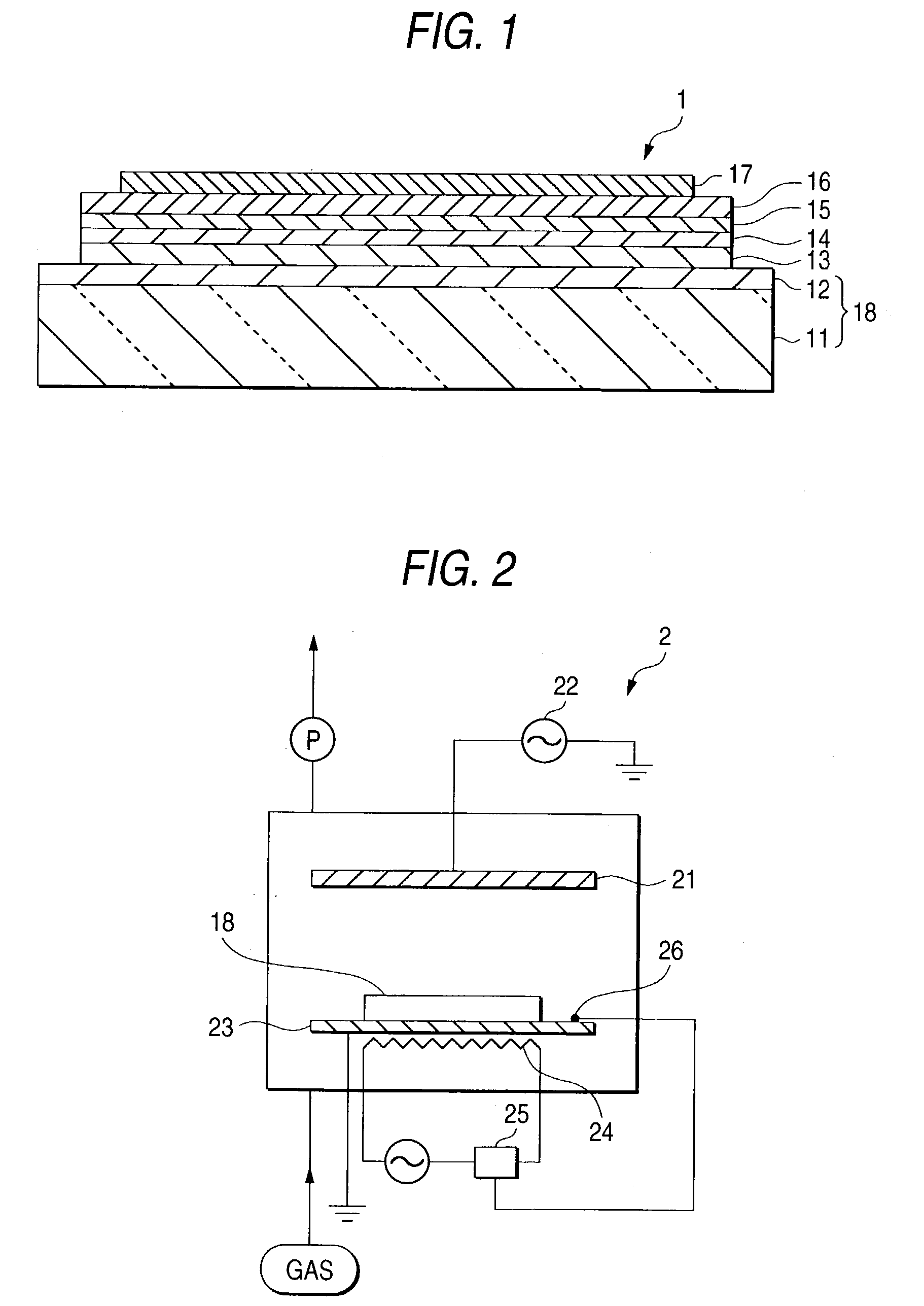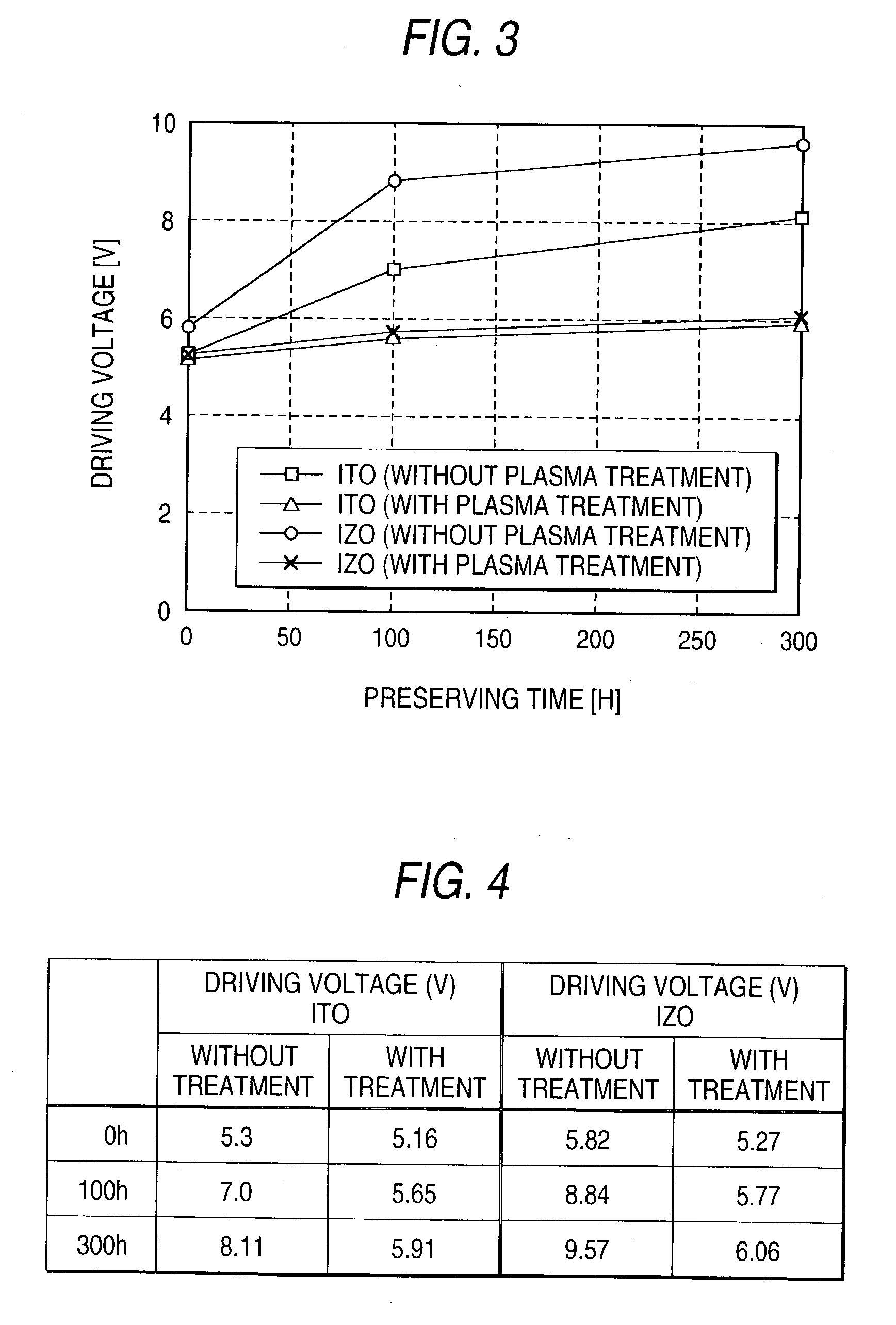Manufacturing method of organic electroluminescent element
a manufacturing method and electroluminescent element technology, applied in the field of manufacturing methods of organic electroluminescent elements, can solve the problems of remarkable luminance degradation, difficult heat treatment of substrates having transparent electrodes at a temperature of 200.degree, and deterioration of organic el elements
- Summary
- Abstract
- Description
- Claims
- Application Information
AI Technical Summary
Benefits of technology
Problems solved by technology
Method used
Image
Examples
first embodiment
[0025] this invention will be described with reference to accompanying drawings.
[0026] FIG. 1 shows an organic EL element 1 according to this embodiment. The organic EL element 1 includes a substrate portion 11, a transparent electrode (anode) 12 of an IZO film disposed on the substrate portion 11, a hole injecting layer 13 that is an organic layer deposited on the transparent electrode 12, a hole transporting layer 14 that is an organic layer deposited on the hole injecting layer 13, a light emitting layer 15 that is an organic layer deposited on the hole transporting layer 14, an electron injecting layer 16 deposited on the light emitting layer 15 and an electrode (cathode) 17 deposited on the electron injecting layer 16.
[0027] The substrate portion 11 is made of synthetic resin such as polycarbonate.
[0028] The hole transporting layer 14 is made of aromatic amine derivative such as N,N'-diphenyl-N,N'-(3-methylphenyl) -1,1'-bisphenyl-4,4'-diamine.
[0029] The light emitting layer 15 ...
example
[0057] Using the plasma generating apparatus 2 employed in the embodiments described above, organic EL elements having the same structure as in the embodiments described above was manufactured. Two kinds of organic EL elements with the transparent electrodes of ITO and IZO were manufactured.
[0058] The plasma treatment was carried out within an atmosphere of a mixed gas of carbon tetrafluoride and oxygen (oxygen density of 5%) under the conditions of a temperature of the electrode-equipped substrate of 50.degree. C., a high frequency of 13.56 MHz and pressure of 0.9 Torr (120Pa). The flow rate of the mixed gas was 200SCCM (the gas flow rate calibrated at 0.degree. C. and 1 atom is 200 cc / min), the RF power was 50 mW / cm.sup.2, and the treatment time was 10 minutes.
[0059] After the organic EL elements thus manufactured were placed in an oven maintained at 100.degree. C., changes in the driving voltage with respect to 100.degree. C. preserving time were observed with the current density...
PUM
 Login to View More
Login to View More Abstract
Description
Claims
Application Information
 Login to View More
Login to View More - R&D
- Intellectual Property
- Life Sciences
- Materials
- Tech Scout
- Unparalleled Data Quality
- Higher Quality Content
- 60% Fewer Hallucinations
Browse by: Latest US Patents, China's latest patents, Technical Efficacy Thesaurus, Application Domain, Technology Topic, Popular Technical Reports.
© 2025 PatSnap. All rights reserved.Legal|Privacy policy|Modern Slavery Act Transparency Statement|Sitemap|About US| Contact US: help@patsnap.com



